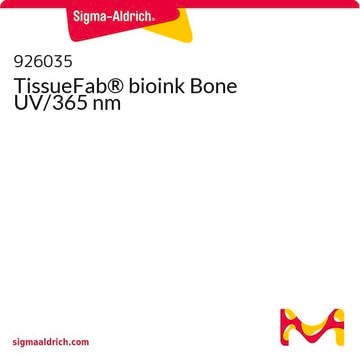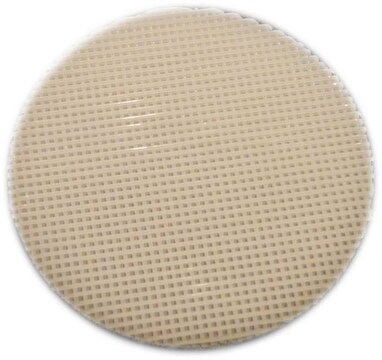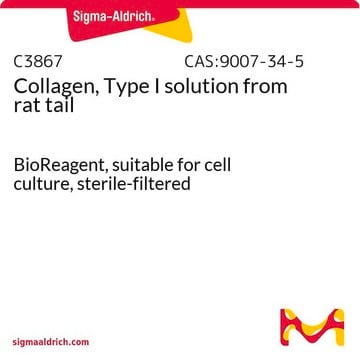추천 제품
설명
0.2 μm sterile filtered
suitable for 3D bioprinting applications
Quality Level
양식
gel form (viscous)
불순물
≤5 CFU/g Bioburden (Fungal)
≤5 CFU/g Bioburden (Total Aerobic)
색상
white
pH
6.5-7.5
응용 분야
3D bioprinting
저장 온도
2-8°C
유사한 제품을 찾으십니까? 방문 제품 비교 안내
애플리케이션
TissueFab® - GelMA-Bone-Vis bioink is designed for promoting osteogenic differentiation of stem cells. It is based on Gelatin methacryloyl (GelMA) - Hydroxyapatite (HAp) hydrogel system. HAp is a highly crystalline form of calcium phosphate. HAp has a chemical similarity with the mineralized phase of bone which accounts for their excellent biocompatibility and osteoinductive and osteoconductive properties favorable for bone regeneration. HAp-containing hydrogels has been studied in literature to demonstrate their processability with different additive manufacturing approaches. Printing of cell laden structures with HAp containing bioink formulations have shown superior osteogenic properties.
포장
Product contains 10 ml of solution packaged in glass bottle.
법적 정보
TISSUEFAB is a registered trademark of Merck KGaA, Darmstadt, Germany
Storage Class Code
12 - Non Combustible Liquids
WGK
WGK 3
Flash Point (°F)
Not applicable
Flash Point (°C)
Not applicable
가장 최신 버전 중 하나를 선택하세요:
Tunable hydrogel composite with two-step processing in combination with innovative hardware upgrade for cell-based threedimensional bioprinting.
Wust S. et al.
Acta Biomaterialia, 10, 630-640 (2014)
Nano hydroxyapatite particles promote osteogenesis in a three-dimensional bio-printing construct consisting of alginate/gelatin/hASCs
Wang X F et al.
Royal Society of Chemistry Advances, 6, 6832-6842 (2016)
Mehdi Sadat-Shojai et al.
Materials science & engineering. C, Materials for biological applications, 49, 835-843 (2015-02-18)
The ability to encapsulate cells in three-dimensional (3D) protein-based hydrogels is potentially of benefit for tissue engineering and regenerative medicine. However, as a result of their poor mechanical strength, protein-based hydrogels have traditionally been considered for soft tissue engineering only.
Yicong Zuo et al.
ACS applied materials & interfaces, 7(19), 10386-10394 (2015-05-01)
Modular tissue engineering holds great potential in regenerating natural complex tissues by engineering three-dimensional modular scaffolds with predefined geometry and biological characters. In modular tissue-like construction, a scaffold with an appropriate mechanical rigidity for assembling fabrication and high biocompatibility for
Xi Chen et al.
International journal of nanomedicine, 11, 4707-4718 (2016-10-04)
Periodontitis is a chronic infectious disease and is the major cause of tooth loss and other oral health issues around the world. Periodontal tissue regeneration has therefore always been the ultimate goal of dentists and researchers. Existing fabrication methods mainly
자사의 과학자팀은 생명 과학, 재료 과학, 화학 합성, 크로마토그래피, 분석 및 기타 많은 영역을 포함한 모든 과학 분야에 경험이 있습니다..
고객지원팀으로 연락바랍니다.








